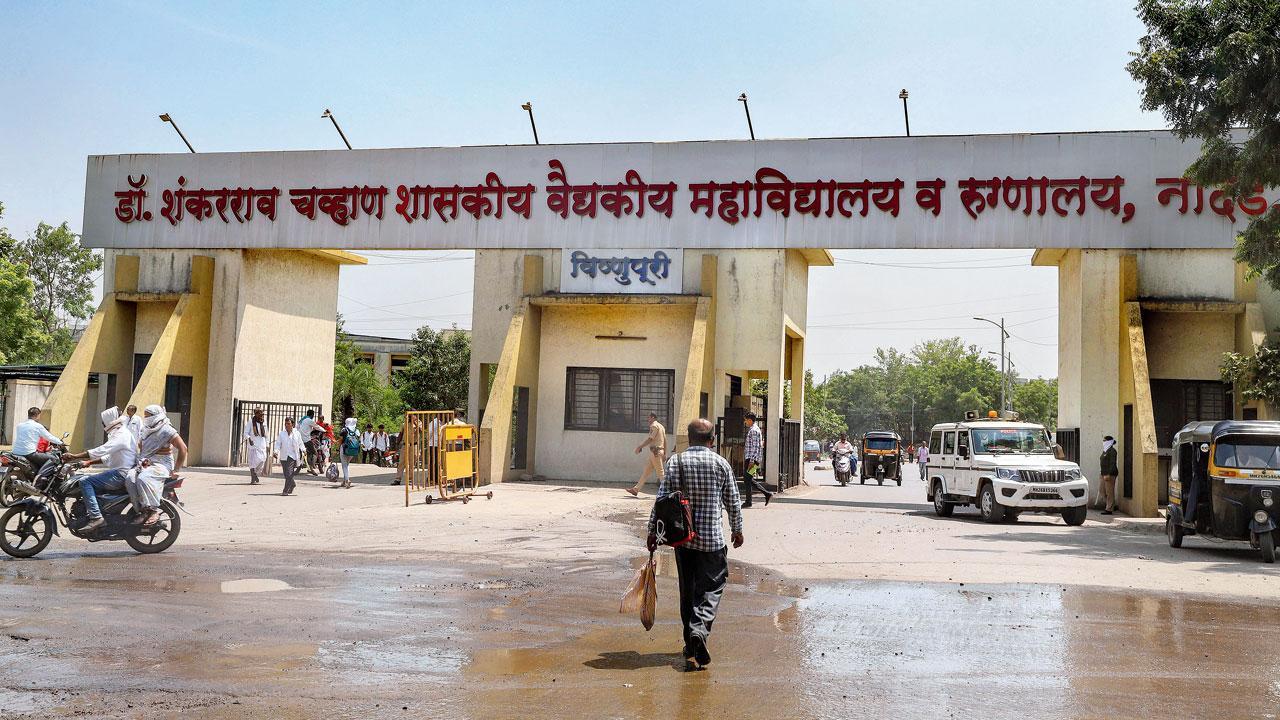Maharashtra’s public healthcare needs immediate attention; politicians, who are temporary, and the bureaucracy, which is permanent, cannot run away from their responsibility

Dr Shankarrao Chavan Government Medical College and Hospital, where 31 died in 48 hours since September 30, in Nanded. Pic/PTI
 There is no doubt that the sarkari healthcare in Maharashtra needs a complete overhaul. But who will bell the cat? The executive or the bureaucracy?
There is no doubt that the sarkari healthcare in Maharashtra needs a complete overhaul. But who will bell the cat? The executive or the bureaucracy?
It should be a combined effort of politicians and bureaucrats, especially the Indian Administrative Service officers, right from the zilla parishad CEOs and district collectors to their supreme commander, the chief secretary at the Mantralaya.
ADVERTISEMENT
Then comes the role of the expert hands in healthcare and their administration, led by doctors who head the districts, divisions and state.
Collective failure
Public healthcare is handled by two arms of the government—the public health department that runs various public hospitals across the state, and the medical education department, that runs hospitals attached to medical colleges. So, the role of the respective deans and hospital superintendents too becomes critical.
Some civic bodies like Mumbai and Thane also operate hospitals and medical colleges. A majority of Mumbai’s patient load is handled by the civic healthcare. The civic bodies are controlled by the urban development department. The two departments, public health and medical education, work parallely, creating a mess of their own. Undoubtedly, politicians must be taken to task for their lacklustre outlook and ‘who cares’ approach.
The departmental secretaries and the expert hierarchy must also be pinned for not taking their jobs seriously. Successive disasters in the medical college hospitals and public hospitals have certainly shamed Maharashtra, touted to be among the most developed and progressive states. The tragic deaths in Nanded, Chhatrapati Sambhaji Nagar and Nagpur contradict this claim.
Wake-up call for CM
The deaths, allegedly because of medicine and staff shortage, have embarrassed Maharashtra. More so when CM Eknath Shinde has been actively involved in healthcare through his family trust that helps needy patients. Now, the CM must have realised why his family wanted to run a foundation like this. There would be no need for charities like his, if the government’s own system was healthy enough.
Successive CMOs have been running a special cell to provide medical assistance. We wouldn’t need it if the government’s health infrastructure was stronger, funded liberally and staffed sufficiently. Over the years, the politicians have been taking pride in organising mega healthcare camps. It might win hearts and votes. But the other, sadder side of it is that it reveals the state’s poor public health infrastructure, the expert hands included, because the doctors practising in private and corporate hospitals are roped in to treat patients in these camps. Would we need such camps if the government healthcare was robust enough to take care of the people who can’t afford expensive treatment?
Scathing commentary
The Bombay High Court has rightly told the government that responsibility cannot be shifted on the pretext that the growing number of patients and workload has made things difficult in the public hospitals. It directed the public health, medical education and drugs departments to submit details of vacancies and recruitment in the past six months.
It has also demanded one year’s details on the demand and supply of medicine and equipment in the Nanded and Chhatrapati Sambhaji Nagar hospitals. The Court made a scathing commentary on the sorry state of public healthcare affairs, telling the government that the plan, if any, to upgrade the healthcare system had remained only on paper, because neither the implementation nor its outcome had been seen.
The division bench of Chief Justice Devendra Kumar Upadhyaya and Justice Arif Doctor observed while dismissing the state’s claim that the hospitals in question had taken the patients seriously and treated them well, and that the medicine and equipment required were available.
The HC pinned the government down for insufficient budgetary support to public healthcare. As per the state’s submission, the outlay for the year 2020-21 was 4.78 per cent of the total budget. Next year it went up slightly, to be 5.09 per cent. For the current financial year, it has reduced to 4.01 per cent.
60-day challenge
Alarmed by the deaths and harsh criticism, the urban development department, headed by CM Shinde, has instructed the civic bodies in the state to create 1,300 Arogyavardhini Centre in only 60 days. The first batch of 400 is expected to be made operational in 30 days from October 7. The public health and medical education departments are yet to come out with their substantial plans. It seems they don’t have time to spare from the brainstorming sessions that primarily focus on finding excuses and scapegoats.
Dharmendra Jore is political editor, mid-day. He tweets @dharmendrajore
Send your feedback to mailbag@mid-day.com
 Subscribe today by clicking the link and stay updated with the latest news!" Click here!
Subscribe today by clicking the link and stay updated with the latest news!" Click here!








